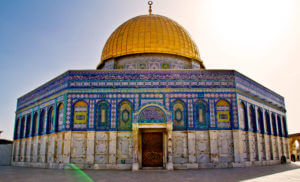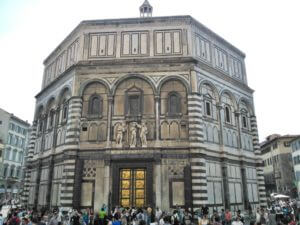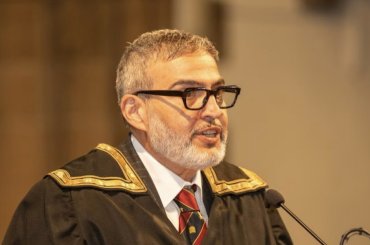Two weeks ago we published an account by Mariam Said of a Debriefing on Palestinian Art before 1948 at the Guggenheim Museum in New York. The Guggenheim briefing included discussion of the looting of art during the establishment of Israel and suggestions that Palestinians looted art from the Tel Aviv museum and other places.
No entity looted Palestinian art and culture as the Israeli entity did and continues to do. They have closed and confiscated innumerable painting exhibitions in total, and they have damaged and shot up paintings on display. Just a bit of research with an open mind will render all this obvious. I have always hoped that they, at least, preserved what they took; I dream of finding a warehouse full of great Palestinian paintings once we have liberated the land and created equality. If they have destroyed or burnt them as they have done with other exhibitions then that would be very sad. Where is the content of studios of both photographers and painters full of work carefully wrapped and locked up prior to 1948 when everyone was escaping terror and thinking they will return in a few weeks? Of course no one was allowed back and those studios were all looted and hopefully their content hidden not burnt. When we gain foreign passports, and finally return to visit beloved homes we find them empty of our valuables and full of strangers.
As I write this letter and spend my present days in Germany overseeing the printing of my book, “Drawing the Kafr Qasem Massacre,” I am reminded of an interview with the leading artist of Kafr Qasem who spent years in prison because of his activism against the horrendous massacre that took place in his village in 1956. He told me that the Israeli police often entered his home unannounced and confiscated his drawings about the massacre. He also told me that while in prison he did not dare draw about the massacre so he drew in sympathy with the struggle in Vietnam. They confiscated all those as well. When I told him that he should go back and demand their return, he replied in both words and poignant body language that he could never return to a place of so much pain. Artworks by a political prisoner who experienced the Kafr Qasem massacre and drew in solidarity with Vietnam are invaluable pieces of Palestinian history. Where are all these art works looted by Israel?
Palestinian art, culture, journalism, literature, and music were alive and thriving before 1948 in spite of the British attempt at quelling them. Mariam generously pointed out my writing on Palestinian art in Jerusalem before Israel occupied Palestinian lands in 1948. There is no need to list sources and occasions. Any sincere scholar can find them. What is interesting, however, in Mariam’s report is how reality is inverted. It is not new to us Palestinians, as the major inversion we live with is being labeled terrorists and so treated when in fact we are the victims of Israeli terrorism. One wonders how it is that an artist loots his own work if he or she carries it and escapes from bombs, bullets, and terrorist gangs. How can what Palestinians rescued from the huge looting of land, buildings, art, books, jewelry, furniture, warehouses of products that Israel conducted be termed ‘theft’ while what they looted is termed ‘Israeli property’? How does one steal what is his or hers? How does one steal the product of their own hands?
Let me give direct personal witness here that my childhood home in Palestine, which I was forced to leave in 1948, contained books, oil paintings, valuable Persian carpets, modern appliances, and furniture. All was looted including the house itself and including a warehouse full of new Rover automobiles, Goodyear tires, and a lot more that my father imported. And that is not to mention all his other properties in Jaffa, Haifa, and Jerusalem. My father inherited nothing material. He began life selling bread baked by his mother in the streets of Jerusalem during the famine days of the First World War. All that he built for himself and his family was looted by Israel.
We will keep telling our story. Israelis can invert the truth and deeply influence the media but the future will be ours as more and more people are listening to what we say and more and more disrespecting the mass media. These days my narration about Palestine meets with agreement. People no longer accuse but rather nod in agreement.
The new Israeli propaganda is taking the tired old slogan about a land empty of people for a people…—it is too tired to repeat. Now they refurbish it by trying to make out that there was always an Israel – a kind of forever and ever of the past. Their irrational inversions at first leave one speechless but are worthy of minimal attention. It is better to be creative enriching our own as well as international culture. Responding to propaganda is time wasted within the limits of their own narrative—limits that contradict creativity. I wish they would lift their heads out of the blinding miasma of their own propaganda and embrace equality.
The Guggenheim’s subtitle for the show Mariam Said so aptly described was “Contemporary Art of the Middle East and North Africa.” In a title like this, Palestine is removed and Israel replaces it. The two pieces in the show by Israeli artists reveal strange limitations and intentions. One talks about the suffering of Jews in Europe within the context of an exhibition that contains mostly Arab art; while the other, the debriefing, tells us that Israel was forever there and all on the land properly belongs to Israel. That is, one talks about the suffering of Jews while the other exploits that pain to loot. In reaction to such a formula, I would stand with Jews who might demand that Israel remove the Star of David from their flag.

My impression regarding the critical discourse on Arab art is of its failure. I have become persuaded that western thinkers on art do not really understand Arab art because they are always looking for depth and perspective, and lately for the idealist, anthropological, mostly non-visual creations of western Post Modernism. They look for those things they are knowledgeable about, and this blinds them to all else. They rarely recognize the deep influence of Arab art on Western art – or more bluntly put, the influence of Palestinian art on Italian Renaissance art, which they see as the basis of Western art. One of the great monuments of Islamic fine art, The Dome of the Rock in Jerusalem (691), is a major and catalytic influence on the Baptistery in Florence (1059-1128).

Furthermore, the division of wall space in Islamic architecture into geometric segments harmonious with the architecture itself influenced the visual segmentation of European cathedrals.
Arab and Palestinian modern and contemporary art is influenced by international sources both from the east and the west as by the ancient art of their ancestors in the region. This is a typically healthy cultural attitude in our times. The national narcissism of recent centuries is no longer appropriate. The problem is that the eastern components are invisible to those who are unable to see symmetry as an imitation of nature. That is really too bad. I sometimes think that having trained my eye in the symmetry of Islamic art, I am more easily able to see the beautiful rhythms of nature than those who have no such learning. I have similar benefits from visual study of Asian art from Iran to Japan.


